A substantial share of the credit for leading the charge of India’s legacy boarding and new genre international schools into neighbouring countries and further afield in the new millennium, should accrue to the Kolkata-based Afairs Exhibitions and Media Pvt. Ltd. Dilip Thakore reports
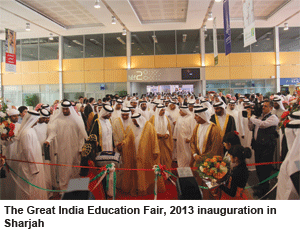 For over half a century, successive governments in New Delhi have made sporadic attempts to attract foreign students into India’s higher education institutions. In the early years after independence when there was heavy emphasis on Afro-Asian unity and the Non-Aligned Movement, a large number of scholarships were offered by the government-sponsored Indian Council for Cultural Relations (ICCR, estb.1950) to school and college students from African, Asian, and newly independent countries under various programmes such as the Cultural Exchange Programme, General Cultural Scholarship Scheme, Apasaheb Pant Scholarship Scheme, Commonwealth Scheme, Technical Cooperation Scheme of the Colombo Plan, Reciprocal Scholarship Scheme, Scholarship for Sri Lanka and Mauritius, SAARC Scholarship Scheme and ICCR Scholarship Scheme.
For over half a century, successive governments in New Delhi have made sporadic attempts to attract foreign students into India’s higher education institutions. In the early years after independence when there was heavy emphasis on Afro-Asian unity and the Non-Aligned Movement, a large number of scholarships were offered by the government-sponsored Indian Council for Cultural Relations (ICCR, estb.1950) to school and college students from African, Asian, and newly independent countries under various programmes such as the Cultural Exchange Programme, General Cultural Scholarship Scheme, Apasaheb Pant Scholarship Scheme, Commonwealth Scheme, Technical Cooperation Scheme of the Colombo Plan, Reciprocal Scholarship Scheme, Scholarship for Sri Lanka and Mauritius, SAARC Scholarship Scheme and ICCR Scholarship Scheme.
However the early enthusiasm of Afro-Asian students for Indian higher education tapered off as the Central and state governments tightened their grip on the country’s public colleges and universities, eroded their autonomy and drove academic standards southward. With not even one of India’s 35,000 colleges and 700 universities — some of which were established over 150 years ago — ranked in the authoritative league tables of the world’s best universities published annually by the London-based rating agencies Quacarelli Symonds (QS) and Times Higher Education — despite the best efforts of government and ICCR — the number of foreign students in India’s higher education institutions is estimated at a mere 27,500.
Meanwhile, promoted only by word-of-mouth and information passed along informal grapevines, right from the early 1950s, a few dozen among India’s 80,000 English-medium private schools have been steadily attracting students from abroad, especially from the 20 million strong Indian diaspora. Barred from high-quality English medium schools by formal and informal apartheid practiced in former British colonies and protectorates, a large contingent of children of prosperous businessmen in these territories — including your Uganda-born correspondent — were packed off to boarding school in India.
An unsung achievement largely ignored by politicians and the media is that India’s much maligned private education providers, particularly vintage boarding schools such as Woodstock, Mussoorie (estb. 1852), Kodaikanal International (1901), Hebron, Ooty (1899), St. Paul’s, Darjeeling (1823) among others, have hosted batches of primary-secondary students from the US, Thailand, South Korea, Nepal, Kenya, Bangladesh among other nations for several decades.
In the new millennium this quiet migration of school students to India has received fresh impetus with the promotion of a spate of new genre, capital-intensive international schools distinguished by sprawling campuses, state-of the-art infrastructure, often foreign headmasters and affiliation with offshore examination boards such as Cambridge International Examinations (CIE), UK and International Baccal-aureate Organisation (IBO), Geneva whose school-leaving certification is unreservedly accepted by picky univer-sities around the world.
Offering infrastructure and curriculums comparable with the best in the West at a fraction of the price of private CIE/IB education abroad, India’s English medium international schools — which aggressively market themselves in foreign countries — are drawing a rising number of students from abroad, particularly from neighbouring Asian countries which don’t have a strong English language learning tradition. Although official statistics relating to the number of foreign K-12 students aren’t available, according to Raj Mohindra Consultants, a Mumbai-based education advisory, they may well exceed the number of international students in India’s higher education institutions.
If India’s popular legacy boarding and new genre international schools are attracting a large and rising number of students from neighbouring countries and further afield in the new millennium, a substantial share of the credit for this welcome development should accrue to the Kolkata-based Afairs Exhibitions & Media Pvt. Ltd (AEM/Afairs, estb. 1994) and its visionary promoter-managing director Sanjeev Bolia, a commerce graduate of Kolkata University who hit upon the idea of showcasing K-12 best residential schools nationwide and abroad. One of the three sons of Tej Singh Bolia, a Kolkata-based self-employed supplier of hardware and engineering equipment to education institutions, after grad-uating, Bolia resisted family pressure to join an accountancy firm and organised Kolkata’s first computer exhibition-cum-seminar in 1994.
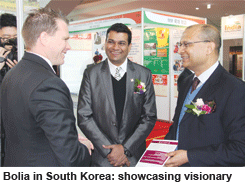 “India’s IT revolution had just started and there was tremendous interest in how these wonder machines worked, and computer training institutes were keen to create awareness about the growing importance of computer literacy and education. The exhibition received an excellent response although I lost money on it because I hadn’t budgeted for numerous expenses. Nevertheless this failure made me aware that career guidance and counseling services were completely unavailable to students emerging from the school system. I began researching and learning the nuts and bolts of the institutional exhibitions and career counseling and guidance business, and in June 1995 with Rs.60,000 borrowed from friends, I staged my first higher education exhibition-cum-career coun-seling fair in Kolkata. Afairs Exhibitions & Media Pvt. Ltd was incorporated in 1995 and broke even in 1997,” recalls Bolia.
“India’s IT revolution had just started and there was tremendous interest in how these wonder machines worked, and computer training institutes were keen to create awareness about the growing importance of computer literacy and education. The exhibition received an excellent response although I lost money on it because I hadn’t budgeted for numerous expenses. Nevertheless this failure made me aware that career guidance and counseling services were completely unavailable to students emerging from the school system. I began researching and learning the nuts and bolts of the institutional exhibitions and career counseling and guidance business, and in June 1995 with Rs.60,000 borrowed from friends, I staged my first higher education exhibition-cum-career coun-seling fair in Kolkata. Afairs Exhibitions & Media Pvt. Ltd was incorporated in 1995 and broke even in 1997,” recalls Bolia.
Initially the company organised education fairs mainly for private professional and higher education colleges seeking students, and parents/students looking for quality study programmes in reputable institutions. However in 2004 it held its first Premier Schools Exhibition in New Delhi and Mumbai, creating a forum for K-12 schools to showcase their institutions to parents anxious to provide their children superior schooling. Since then the company’s India and International Premier Schools Exhibition (IIPSE) has become its star show, and has not only created a national market for top bracket primary-secondary schools, but has impacted them upon neigh-bouring countries and beyond.
Currently the AEM services portfolio comprises four exhibitions-cum-fairs staged in 27 cities across India and eight national capitals abroad through the year — the Career Fair, Admission Fair, IIPSE, the annual IIPSE Conference for school heads and educators and The Great Indian Education Fair (TGIEF) which displays a mix of schools and higher education institutions abroad. These events are staged in rapid succession in 35 cities during carefully selected months of every academic year.
For instance the Career Fair takes place annually in six cities in April-May after higher secondary exams are written to enable school leavers to choose suitably priced undergrad/professional colleges. Admission Fairs are organised in nine cities for school leavers who may have missed the Career Fairs. Likewise, IIPSE education fairs are staged in 16 cities in India and TGIEF in eight national capitals abroad. Thus almost through the year, high-end schools showcase their infrastructure and curriculums for parents to pick and choose primary-secondaries which will be best suited to their children.
“Organisation and management of school and college exhibitions is a high-risk and complicated business which requires meticulous planning, careful budgeting and timely execution. For a start, it necessitates bulk buying of media space and time well in advance to negotiate affordable rates. With time-bound and scheduled media space/time having been purchased beforehand, project execution at pre-scheduled times is of critical importance. Simultaneously exhibition stalls pricing and on-site project management to plan stalls, entry and egress, facilities including food and beverages, and often academic seminars staged during exhibitions, require management skills of the highest order. In Afairs the critical function of media space and time purchase is negotiated by Bolia himself, and down the line he is supported by an experienced team of directors with excellent marketing and management skills. This is why Afairs is miles ahead of competitor companies such as Global Events and Expositions, SM Media, Times of India, Business India and Friendz Exhibitions who have ventured into the education fairs and events business,” says a Bangalore-based education consultant who preferred to remain anonymous.
The excellent grasp of the fundamentals of the institutional exhibitions business which AEM’s top brass has acquired over the past two decades, coupled with quick decision making and project execution has enabled this Kolkata-based company to emerge as India’s largest enterprise in this line of business. Typically, AEM (estimated annual revenue: Rs.35 crore) begins its business year with its Career Fairs with undergraduate and professional educ-ation institutions such as Amity and Manipal universities, VIT-Vellore, IITs, SRM and Jain universities etc, unveil-ing their study programmes to Plus Two school leavers during April-May. In June-July, it stages its annual Admis-sions Fair for school leavers after the board exam results are declared. Subsequently, during the period September-February it stages its flagship IIPSE school expos in 16 cities in India and TGIEF in eight national capitals abroad.
 “Venue selection, timing and sched-uling, advertising and sales promotion, media buying, onsite conceptualisation and design, floor management, demog-raphics and demand assessment, coordination as well as attention to detail are necessary for success in this business. Many firms have entered the education exhibitions and fairs sector but haven’t understood its compl-exities,” says Vivek Shukla, a commerce graduate of Kolkata University who signed up with AEM in 1995, led its charge into foreign markets in 2007 and is currently director of international projects of the company. According to him, during the past 20 years the company has developed an institutional clients base of over 1,000 schools, colleges and universities who have showcased their institutions in 27 cities in India and eight countries abroad, attracting over 2 million visitors. “Afairs is the only company which provides interactive forums to K-12 schools across India and abroad,” adds Shukla.
“Venue selection, timing and sched-uling, advertising and sales promotion, media buying, onsite conceptualisation and design, floor management, demog-raphics and demand assessment, coordination as well as attention to detail are necessary for success in this business. Many firms have entered the education exhibitions and fairs sector but haven’t understood its compl-exities,” says Vivek Shukla, a commerce graduate of Kolkata University who signed up with AEM in 1995, led its charge into foreign markets in 2007 and is currently director of international projects of the company. According to him, during the past 20 years the company has developed an institutional clients base of over 1,000 schools, colleges and universities who have showcased their institutions in 27 cities in India and eight countries abroad, attracting over 2 million visitors. “Afairs is the only company which provides interactive forums to K-12 schools across India and abroad,” adds Shukla.
Although IIPSE introduced in 2004 has become AEM’s flagship brand, the company’s Career and Admission fairs have also played a major role in developing national markets for undergrad and professional colleges, enabling them to expand capacity and diversify their student-mix, which apart from enabling students from educat-ionally under-served states of the country to avail high quality education across state boundaries, has also served the cause of national integration. Acco-rding to Ritesh Jaiswal, also a commerce graduate of Calcutta University who came aboard AEM in 1995, the travelling Career and Admissions fairs featuring an average of 50 exhibitors cover nine-ten cities annually, attracting 4,000 footfalls per city.
“This translates into 80,000 parents/ students visiting the information and admission stalls of colleges every year for face-to-face interaction with senior faculty and admission officers of exhibitor institutions. This interaction is of enormous marketing and career guidance value to institutional manage-ments and parents/students. This explains why we have retained 80 percent of our exhibitors for over five years, and the number of visitors to our exhibitions keeps increasing year on year,” says Jaiswal.
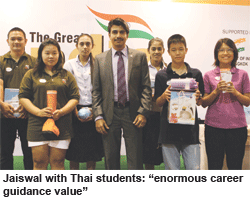 Following encouraging response from the public to AEM’s Career and Admissions higher education fairs and unique IIPSE (schools) fairs, in 2008, the company introduced its hybrid The Great India Education Fair (TGIEF). Staged annually in eight foreign countries viz, Thailand, Nepal, Malaysia, Bangladesh, Bhutan and Sharjah, UAE, in which over 100 primary-secondary and higher education institutions exhibit under one roof, the TGIEF initiative has become a spectacular success. Notably, AEM’s first TGIEF staged in Sharjah last February in which 50 India-based sch-ools and higher education institutions participated, attracted 5,000 visitors resident in the desert kingdom (see pic p.44). According to AEM spokes-persons, over the past five years TGIEF fairs staged abroad and described as “high value, well branded and highly publicised events” have attracted 250 exhibitors and over 1 million footfalls.
Following encouraging response from the public to AEM’s Career and Admissions higher education fairs and unique IIPSE (schools) fairs, in 2008, the company introduced its hybrid The Great India Education Fair (TGIEF). Staged annually in eight foreign countries viz, Thailand, Nepal, Malaysia, Bangladesh, Bhutan and Sharjah, UAE, in which over 100 primary-secondary and higher education institutions exhibit under one roof, the TGIEF initiative has become a spectacular success. Notably, AEM’s first TGIEF staged in Sharjah last February in which 50 India-based sch-ools and higher education institutions participated, attracted 5,000 visitors resident in the desert kingdom (see pic p.44). According to AEM spokes-persons, over the past five years TGIEF fairs staged abroad and described as “high value, well branded and highly publicised events” have attracted 250 exhibitors and over 1 million footfalls.
For the managements of India’s high-end boarding schools, and particularly for the 80 member schools of TAISI (The Association of International Schools of India) who provide capital-intensive globally benchmarked infrastructure, and acad-emic curriculums of British, American and European examination boards, the institutional presentation opportunities provided by AEM’s smoothly choreo-graphed exhibitions and fairs, have come as a God-send. To live up to their billing as ‘international’ schools they need to attract foreign students to project student body diversity. Moreover most of them levy differential (i.e higher) US dollar denominated tuition and residential fees on foreign students which contri-butes towards servicing their heavy investment in infrastructure, foreign-qualified faculty and high affiliation fees.
“We have been participating in Afairs’ well-organised IIPSE and TGIEF events since 2004 and the results have been very satisfactory. We get over 30 foreign admissions annually from parents visiting these fairs,” says Lt. Gen (Retd.) Arjun Ray, the founder-chief executive of the top-ranked Indus International schools in Bangalore (estb. 2003), Hyderabad (2008) and Pune (2012), which host an aggregate 1,910 including 850 foreign students.
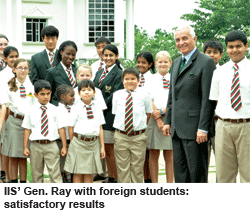 This endorsement of the valuable service AEM is providing to India’s high-end international schools is seconded by Paul J.P. David, director of marketing and admissions of the G.D. Goenka World School (GDWS, estb. 1994), located on 60 verdant acres in Sohna, Haryana on the periphery of Delhi.
This endorsement of the valuable service AEM is providing to India’s high-end international schools is seconded by Paul J.P. David, director of marketing and admissions of the G.D. Goenka World School (GDWS, estb. 1994), located on 60 verdant acres in Sohna, Haryana on the periphery of Delhi.
According to David, GDGWS has received “overwhelming response” from NRIs as a result of AEM exhibitions which he describes as an “awesome, fantastic organisation”. Ditto Ashish Gulati, vice chairman of the Blue Bells schools in Gurgaon, who opines that Afairs has provided “high credibility interface platforms” for K-12 schools and parent communities.
The outcome of the steady develop-ment and refinement of the AEM business model over two decades — the top management of the 30-strong company is set to celebrate its 20th anniversary this year with a big bang — is that it has transformed into a powerful media corporate offering a mix of exhibition platforms, career magazines (Premier Schools Guide, Career Guide and Career Success), and seminars and events to India’s most ambitious primary-secondary and higher education institutions which aspire to recruit students beyond national boundaries.
“In 1998, Afairs education fairs attracted barely 10-15 exhibitors and covered only three cities in India. Since then the number of exhibitor institutions has grown to 50-60 per fair, and our footprint covers 27 cities across India and eight destinations abroad. Moreover as the number of visitors to Afairs exhibitions has grown and the quality of our events has improved, the price per exhibition stall has risen from Rs.20,000 to Rs.90,000-100,000. There’s huge and rising demand from the middle class across India and in neighbouring countries for the best available school and higher education. And in Afairs we are making every effort to connect parents/students with schools and colleges most suitable for them in terms of price and study programmes,” says Vishal Shukla, another commerce grad of Calcutta University who signed up with AEM in 1998 and is currently director of operations.
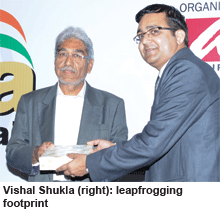 Because of mysterious neglect of education — especially preschool and primary schooling — by successive governments at the Centre and in the states in post-independence India, the country’s education institutions are lagging way behind not only Western but also Asian academic institutions. The Annual Status of Education Report (ASER), published by the highly-respected Mumbai-based NGO Pratham, has been repeatedly highlighting that over half the children in class V in rural primaries can’t read and comprehend class II texts or manage simple two-digit subtraction sums.
Because of mysterious neglect of education — especially preschool and primary schooling — by successive governments at the Centre and in the states in post-independence India, the country’s education institutions are lagging way behind not only Western but also Asian academic institutions. The Annual Status of Education Report (ASER), published by the highly-respected Mumbai-based NGO Pratham, has been repeatedly highlighting that over half the children in class V in rural primaries can’t read and comprehend class II texts or manage simple two-digit subtraction sums.
Moreover selected Indian secondary students aged 15 who participated for the first time in PISA (Programme for International Student Assessment) in 2011, were ranked 73rd among students from 74 participating countries, and not even one among India’s 700 universities, some of which were established in 1857, are ranked in the World University Ranking league tables of international assessment agencies QS and Times Higher Education (THE).
Worse, even in a THE league table publ-ished last month which ranks the 100 best universities of BRICS (Brazil, Russia, India, China and South Africa) nations, not one Indian university is ranked among the Top 10 in a table dominated by Chinese institutions.
Despite this dismal general condition of Indian education across the spectrum, parado-xically there is a small and growing number of excellent, globally-bench-marked schools and colleges — mainly privately promoted — which are attracting students from across the country and abroad. Notwithstanding official discouragement from govern-ment and even the Supreme Court, whose fuzzy logic dictates that high-quality education must necessarily be provided as charity untainted by base considerations of return on investment or opportunity cost of scarce capital, against formidable odds, a growing tribe of determined edupreneurs (education entrepreneurs) driven by enlightened self-interest mixed with altruism, have established K-12 schools and higher education institutions offering globally comparable school and professional education at a fraction of international prices.
Intelligently leveraging India’s historic English language advantage and new information and communication tech-nologies (ICT), managements of primary-secondaries in India ranked among the Top 10 in various categories in the annual EducationWorld India School Rankings (see EW September 2013) and a handful of private univer-sities (Manipal, Amity, Symbiosis, Sharada among others) are rejuvenating Indian education and attracting stud-ents from around the world. “In the fast globalising world when a diverse academic experience adds considerable weight to students’ CVs, India’s private schools have emerged as favoured institutions of secondary and higher secondary education. In 2013 Daly College hosted 47 students and 15 postgrad teacher trainees from 11 countries,” says Sumer Singh the highly experienced (Lawrence, Sanawar, Doon School, Gordonstoun, Scotland and United World College, Wales) principal of the Daly College, Indore (estb. 1882).
Little wonder Sanjeev Bolia who is all set to celebrate AEM’s 20th anniversary by boldly impacting the company’s footprint in new territories, is optimistic about the future. “Neither the Central nor state governments are alive to the huge potential of India’s developing islands of education excellence. With private investment pouring into schools and colleges, teaching-learning stand-ards in education institutions are improving continuously. It’s important to recognise that India’s best K-12 schools offer the advantages of high-quality English medium education, excellent infrastructure and climatic conditions for year-round sports and games, at one-fifth the price of private school education in Western countries,” says Bolia.
Even in higher education, the emer-gence of private universities like Manipal and Amity and the proposed Nalanda, Ashoka and Shiv Nadar University have changed the mindset of the Indian middle class as also of foreign parents and students towards Indian education. “And you can rest assured that Afairs which intends to expand its operations to cover several African countries this year and the UK and Germany in 2015, will be in the forefront of introducing India’s excellent islands of school and higher education to the world,” promises Bolia.
For all stakeholders in Indian education that’s a win-win proposition.